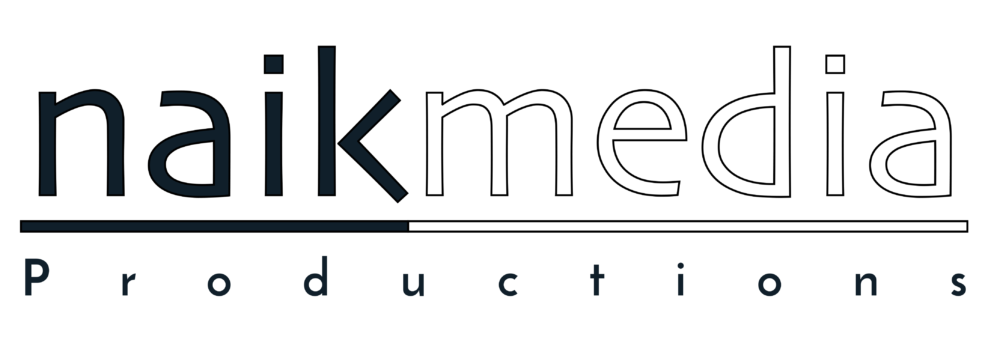How long have you been staring at that screen for..? Trying to decide what piece of equipment to invest in to improve your videos – do I upgrade my camera to the full-frame version that Sony and Canon insist is better, or do I get a better lens…? Something f2.8 because that’s really good…
Well, it’s a good thing you found this blog post before dropping your hard earned cash/your department budget on something that will bring you only marginal improvements.
This is the first in a series of blogs that cover the most important pieces of equipment you need for improving your video quality, and for very little cost. The differences these make vastly outweigh the value of buying a bigger camera or lens. We’re going to do our best to answer the question all video marketers should be asking:
“What essential kit do I need to level up my video production?“
Part 1. The Humble Reflector
When we have people along for work experience at Naik Media, the topic of ‘vital equipment’ inevitably arises. I remember asking the exact same thing when I was starting out: what are the most important pieces of equipment you need?
I was keen to buy the biggest, ‘best’, fullest-frame cameras and widest aperture silent focusing lenses, and the rippling carbon-fibre tripods with oil-fluid-heads and Arca-Swiss plates. I ignored the advice I’m writing about today, and it took me much longer to achieve a great look in my interviews than it should have…
Buy a reflector.
It’s easy to use.
It’s pretty cheap.
It folds up for easy transport.
It makes the subject of the video look fab.
It’s unassuming.
*REFLECTOR*
Buy one.
So what makes a reflector so vital?
You’ve read about dynamic range before, right? Or at least you’ve heard people talking about it when deciding which cameras are better than others.
Basically it is the camera’s ability to show the brightest and darkest elements within the scene/image (i.e. shadows and highlights). Unlike our eyes, cameras struggle to expose both very well, especially when the range of light levels is wide (e.g. outside on a sunny day).
Unless you own a £50,000 (ex VAT, btw) Arri Alexa or Red camera*, it’s likely that your camera has a rather limited dynamic range (let’s not discuss camera manufacturer’s marketed dynamic range, it’s never what they claim…I’m looking at YOU Sony…)

One way you can mitigate your camera’s reduced dynamic range is by using available light to raise the shadows on your subjects face, and that’s where a reflector comes in handy.
You don’t need any heavy, expensive, battery draining electronic lights. Often a reflector will do.
 Lights – big, expensive, and take a while to set up…
Lights – big, expensive, and take a while to set up…
Sizes
Reflectors come in all shapes and sizes. Bigger ones are going to take up more room, be more expensive, and are much more tricky to use (and fold away); especially in the wind. It’s basically a big sail.
A small reflector can be very effective and potentially all you need for an interview situation.
Variety
White. Silver. Gold. Or a mix of the above. Those are the most popular flavours of reflector and each has its use/place.
At Naik Media we use white/silver combo. White for soft, up close fill. Greatly when it’s really sunny. Silver comes in handy when more ‘pop’ is needed, such as when it’s overcast (we work in the Lake District most of the time. Overcast is its natural state!).
 Here’s an example where we used a reflector to raise the shadows on our subject’s face
Here’s an example where we used a reflector to raise the shadows on our subject’s face
We never use gold reflectors. Gold foil gives a ‘pop’ with a warmer feel, and this is great when it’s really grey out. However, it’s much easier these days to add warmth in post (using software) we we don’t recommend using them as you’ll end up with ‘baked-in’ warmth you might not want later.
Use
This could not be simpler.
Hold the reflector so that it’s surface reflects light from a strong source (e.g. sun/large window) onto your subject.
We all know how to do this naturally…
Move the reflector around to find the best angle; it’s all about trial and error, so experiment!
Recommendations
Our recommended brand is Lastolite. We have no affiliation with them apart from buying their product and using on almost every shoot. They are expensive, but they are high quality. When you use something as regularly as we use our reflectors, you want to go with a pro standard. If you want to know the ‘pro-standard’ equipment, then talk to a professional, not a salesman! Your local camera store will also have knowledgeable people who chat with their professional customers and know what they prefer.
If you’ll only use the reflector every now and then, do try a cheaper brand (e.g. Neewer, PHOT-R)
Now watch your interview and video subjects look better and better!
I hope you’ve found this useful. Leave a comment below or get in touch if you want more information, and look out for future blogs in our Vital and Cheap! series.
* Okay, yes. You can get a camera with a dynamic range of 15 stops for around £5,000 ex VAT these days, and that’s quite something. Being able to afford that doesn’t mean that you should not focus on proper exposure!


One Comment